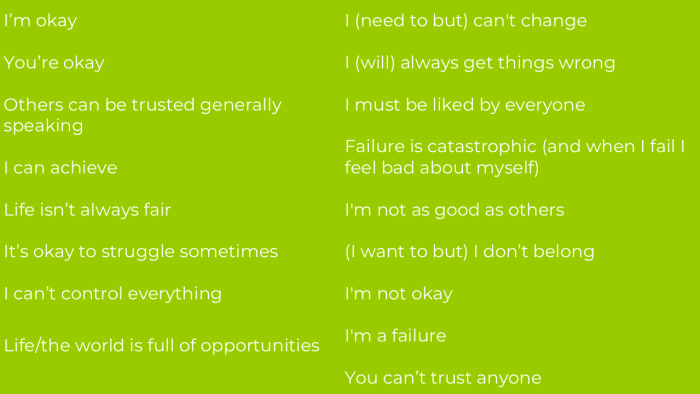I’d like to share here a few ideas about habit-change – in terms of our thinking and/or behaviours – to ‘maximise our potential’ and live our best lives.
It’s a follow-up to a workshop that I ran recently – ‘Understand Your Mind With The Chimp Model’ – based around Steve Peters’ ‘A Path Through The Jungle’. During the session, we looked at what the model is all about, and how we can use it to get an idea of how our beliefs and behaviours are formed, and feed each other/have a reciprocal relationship.
Most importantly, we covered what we can do if these beliefs and behaviours aren’t serving us well, and our emotions are hindering rather than helping us, and limiting our ability to make the most of ourselves and situations.
I call this the seven ‘B’s: Beliefs Beget Behaviours Become haBits Bolstering Beliefs.
And yes, I bent the rule a little with haBits(!!). Coupled with the graphic below, they illustrate how we can create a virtuous, or vicious cycle, depending on what our beliefs and behaviours are.

They’ll be reflected in how we(‘ve learned to) respond to experiences, to people and to situations.
Here are some examples of both helpful/constructive and limiting/destructive beliefs. You can no doubt tell which are which:

Can you recognise any of these for yourself? Maybe some are more occasional and others more ingrained? Or perhaps specific to certain situations/with certain people?
What we’re looking to do is notice those that are unhelpful for us, as a first step to doing something about it.
And what behaviours from us are likely to flow from those beliefs on the left, or those on the right? There’s a good chance that we’ll be making more, or less of ourselves, depending on which of these beliefs apply.
Some example behaviours that spring from these beliefs might be: being overly self-critical; making poor lifestyle choices, e.g. eating/drinking too much; not speaking up when I want to; getting easily frustrated or angry; never asserting myself; worrying overly; putting others before myself; not challenging myself/missing out on events or opportunities for fear of failure.
Whether they’re conscious or unconscious, and we’re aware of them or we’re not, the neuroscience is clear that if we want to remove a limiting or destructive belief or behaviour, it must be replaced by a helpful or constructive belief or behaviour.
So, we have to do something different – and in so doing create a new neural pathway that replaces the old one – and keep at it, until the old pathway ‘withers on the vine’. This might take a lot of repetition before it becomes embedded.
Change is very possible then if we’re motivated and committed and persistent, and don’t expect immediate results, or become downhearted and stop trying if we lapse into old habits on occasion.
I’d highly recommend Steve Peters’ workbook that I’ve mentioned above as a guide to making a change if you’re of a mind to do so.
And if the cycle I’ve described earlier isn’t as virtuous as you’d like it to be, look out for my next missive, when I’ll be recommending some practical techniques to assist with this.
As ever, do get in touch if you’d like a word about any of the foregoing.
